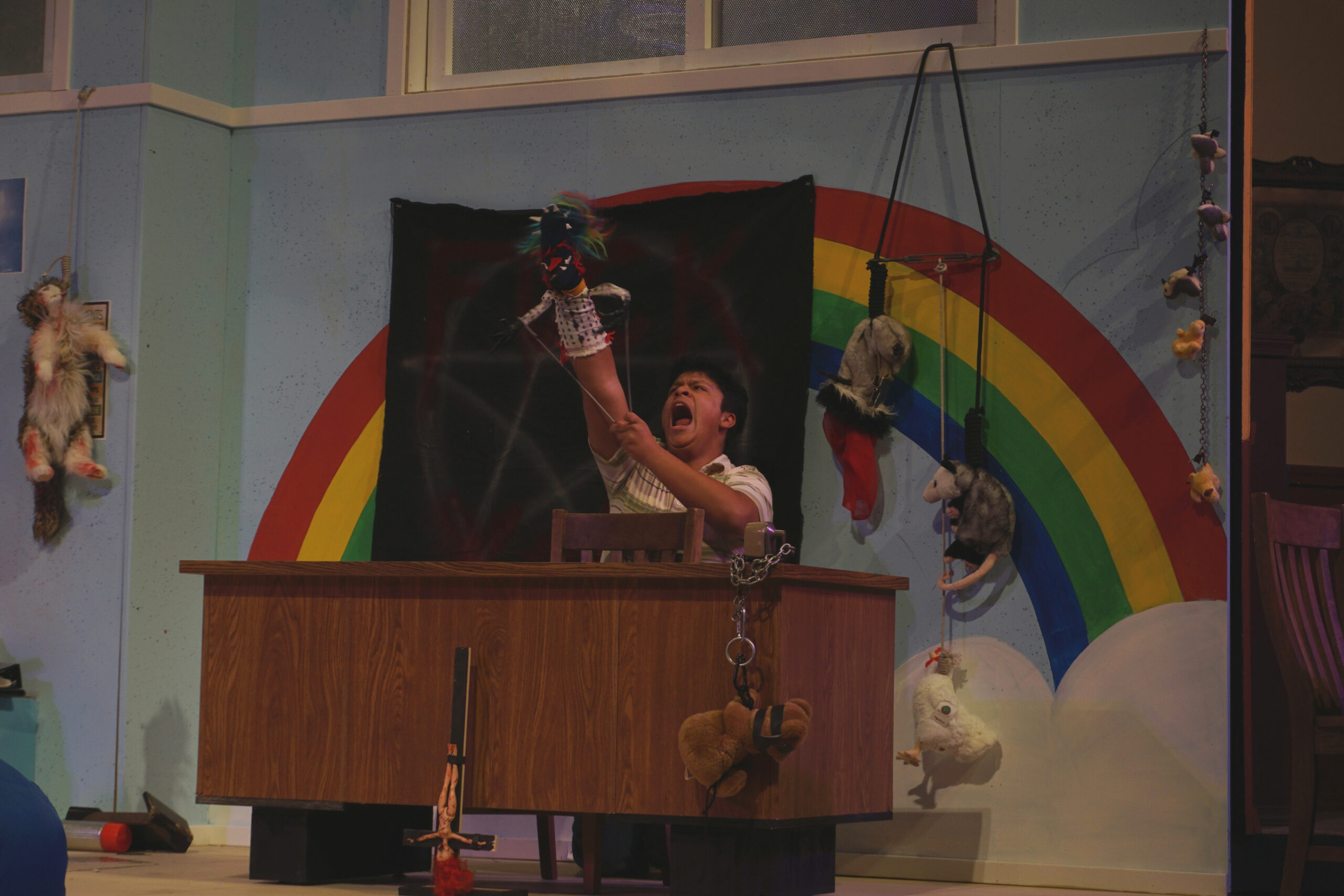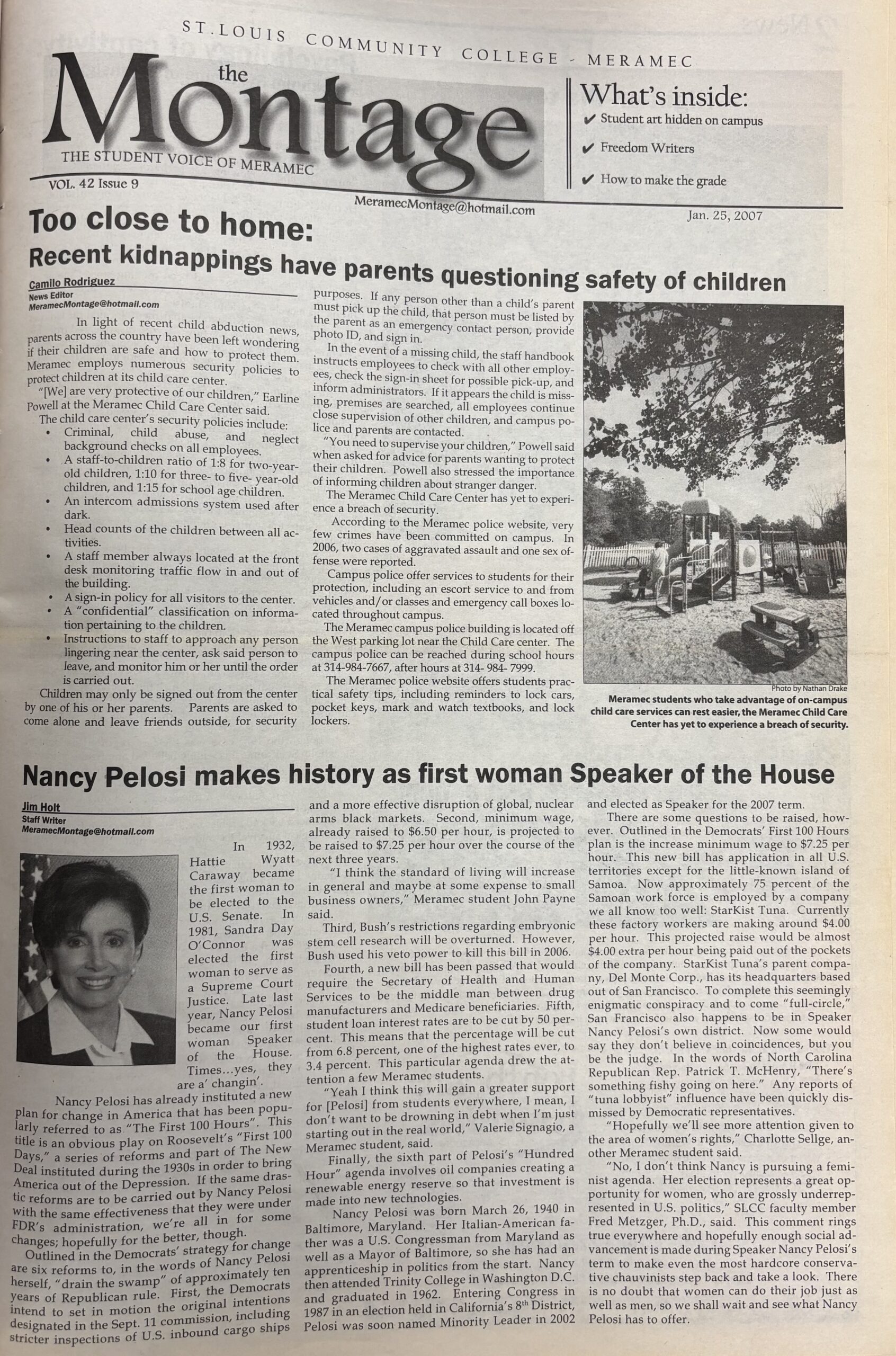Students get the opportunity to see faculty work in the Annual Faculty Show

Kelly Glueck
– Staff Writer –
With critiques almost every week, the average STLCC – Meramec art student is involved in a repetitive cycle of creating and critiquing. Often, their academic lives are full of coaching and premeditated demonstrations by faculty, while art faculty members get the opportunity to see students create and grow every day, it is a rare treat when students get the same opportunity.
Ceramics instructor Ruth Reese explained how seeing completed work varies from the demonstrations shown in the classroom.
“It’s one thing to give a demonstration, but that tends to be rushed, then when [students] actually see something finished that you’ve the extra time and craftsmanship to finish, it can be a great motivator, or at least it was for me,” Reese said.
Reese is one of the 37 individual full-time and adjacent faculty members participating in the Annual Faculty Show, hosted by the Meramec Contemporary Art Gallery on the first floor of Humanities East. The show features work in a variety of disciplines including painting, photography, ceramics, and mixed media.Taking time out of their busy schedule between teaching, family and other obligations, faculty members utilized the show to offer students and the community the rare peek at another side of themselves.
Full-time faculty member and seven-year veteran of the faculty show Jim Ibur, ceramics instructor, explained what the show has to offer to students and faculty.
“Sometimes it’s the only work we see if a person is not showing publicly. This is that moment where we see it as colleagues, and certainly students get a chance to see a very different side of their instructor. This is their other life; this is their work,” Ibur said.
Speaking of double lives, featured artist-instructor Lizzy Martinez has been working on a series of figure painting involving the idea of doubles. Her work, “Seeing Double,” is currently hanging in the show.
While describing how her life as a teacher affects her life as an artist, Martinez mentioned the physical change it has on her work.
“Often times I have to base my lighting situation around when I’m not in class. If I’m here during the day I know I’m working on a night painting when I get back to my studio,” Martinez said.
While scheduling around the classroom can affect the complex arrangement of warm and cool colors on a palette, decade-long faculty contributor and photography professor David Hanlon has noticed, it can also motivate artist-educators to continue progressing within themselves and their field.
“For artists that are teaching here, the activities that they do in the classroom certainly allows them to see what’s important for artist to explore and to learn and to continue to learn over a period of time,” Hanlon said, “It’s that energy in the classroom which really helps motivate faculty to carry on in their own work.”
Ibur said that the co-dependency and complex balance of teaching and making has the ability to blossom artistic careers. It allows artist-educators the ability to explore themselves, reflect, and continue an ongoing dialogue with their students about art and their preferred medium.
“When teachers find out about themselves through their work, they bring real world experience to the classroom versus just experiencing art through their students work or looking at other people work,” Ibur said.
The students now have a chance to see how their teachers have grown artistically, deal with deadlines, and how the techniques described in their art classes are exemplified through the work of their educators. According to Reese, getting work out there can be difficult, even for educators, but it makes them create better work and become a better teacher. It also gives faculty the opportunity to inspire students to show their work in gallery settings.
Martinez described how faculty shows can help inspire students to become part of a growing art community.
“When students come to group exhibitions or faculty shows, I think it’s a good motivator to encourage students themselves to enter into exhibitions to help build their resumes and break into the St. Louis art community,” Martinez said.











